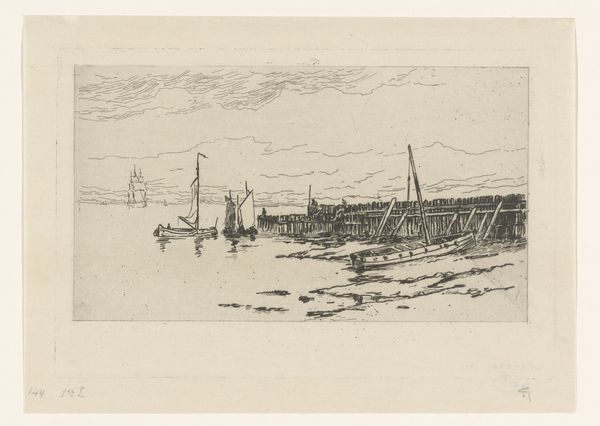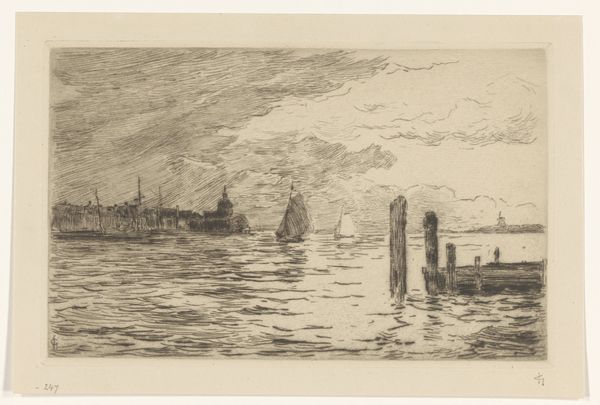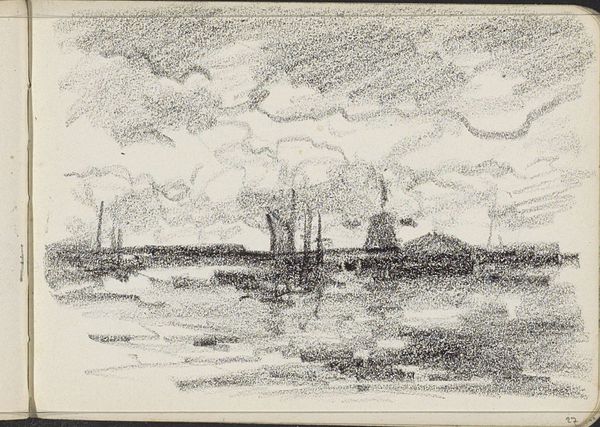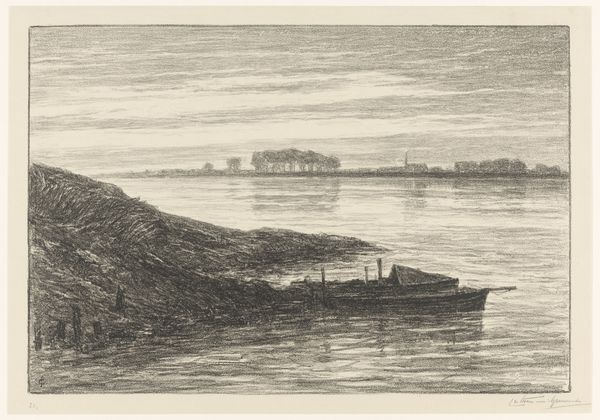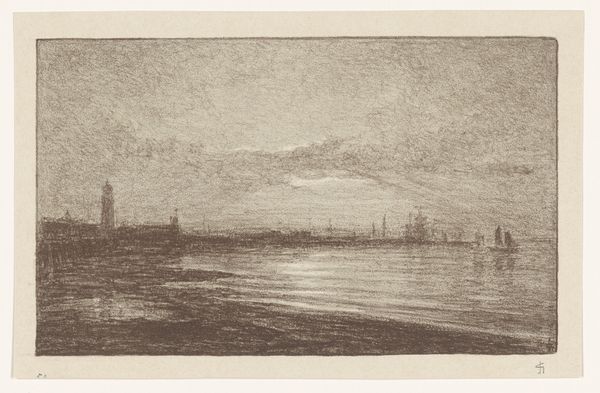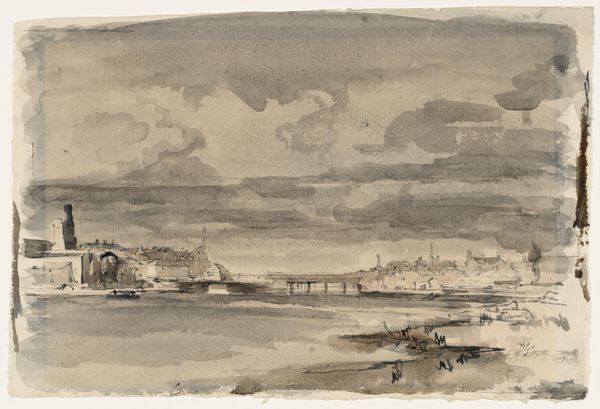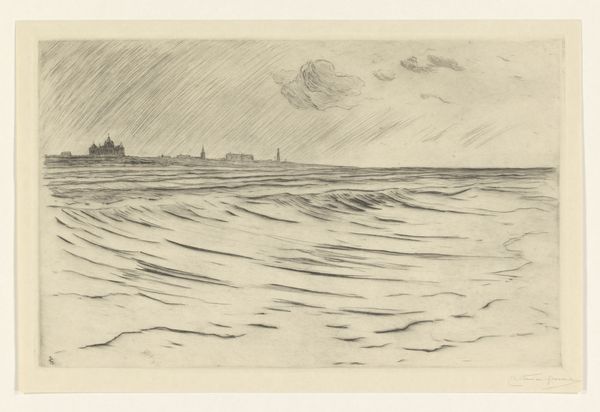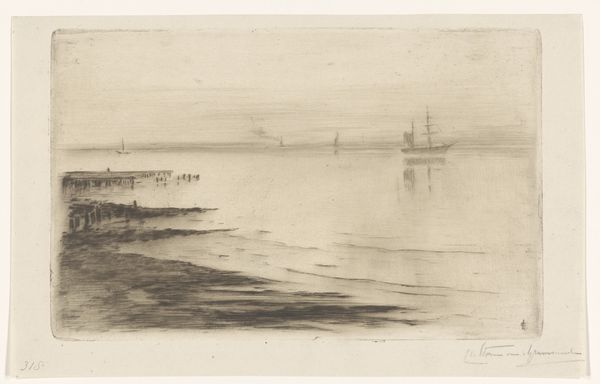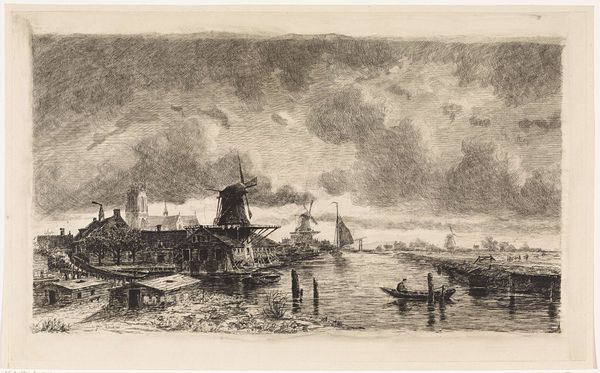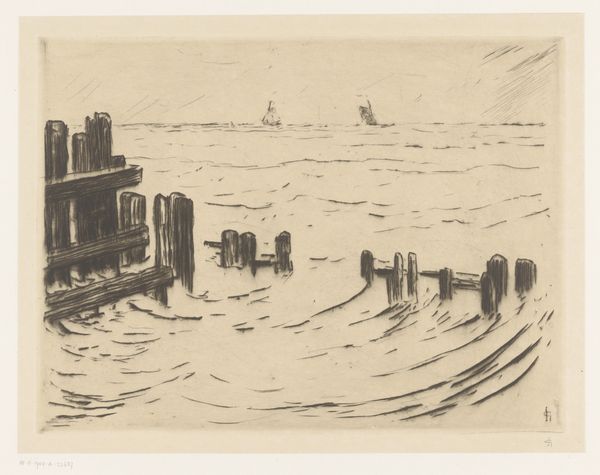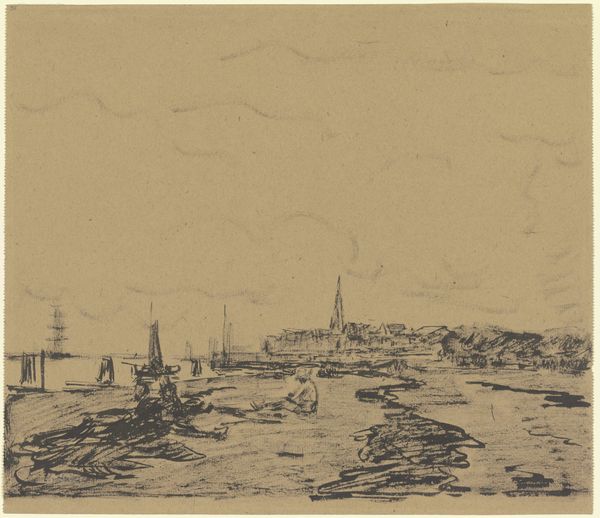
View on the Neva River and the Stock Exchange Building from the Trinity Bridge 1926
0:00
0:00
Dimensions: 14.5 x 28 cm
Copyright: Anna Ostroumova-Lebedeva,Fair Use
Curator: This is "View on the Neva River and the Stock Exchange Building from the Trinity Bridge" by Anna Ostroumova-Lebedeva, created in 1926. It’s a woodcut print showcasing a striking cityscape. Editor: It feels remarkably serene, doesn’t it? The muted tones and the expansive sky lend this quiet, contemplative mood, despite the imposing architecture. Curator: Indeed. What interests me is the deliberate choice of the woodcut medium. Think about the labor involved: each line carefully carved, the texture of the wood grain imprinting itself onto the final print. This tactile quality emphasizes the means of production, doesn’t it? Editor: Absolutely. And consider what the Stock Exchange Building symbolized in 1926, a few years into the Soviet Union. It's not just architecture, it’s the lingering representation of capital set against the backdrop of revolutionary ideals. This creates tension between the old order and the new aspirations, captured at this unique moment in Russian history. Curator: Furthermore, woodcuts were often associated with folk art and revolutionary prints. By employing this "lower" art form, Ostroumova-Lebedeva subverts expectations, elevates the depiction of labour. We’re invited to appreciate both the scene and the artistic labor. Editor: And I can’t help but notice the absence of overtly revolutionary figures. Instead, there are delicate human silhouettes along the embankment; it positions the artwork to engage a subtle socio-political discourse on identity, urbanism, and societal progress. Curator: That’s perceptive. The mirroring of the buildings in the water also brings attention to its construction, a visual grounding that speaks volumes. It acknowledges the unseen efforts underpinning what seems monumental and timeless. Editor: Right. It's more than just a pretty view of the Neva; it’s a visual statement engaging us with complex conversations. It’s art as political engagement and silent protest, if you like, using cityscape. Curator: Examining its materiality and mode of production provides access into those complex debates you point to, offering layered meaning and insights. Editor: It does! It leaves you contemplating not just what is shown, but what isn’t… or what may no longer be visible today.
Comments
No comments
Be the first to comment and join the conversation on the ultimate creative platform.
